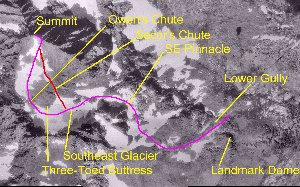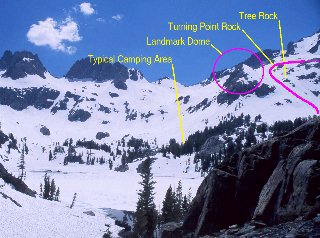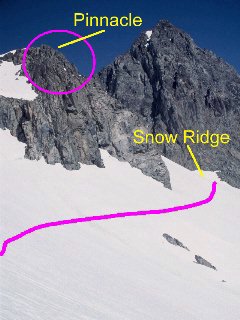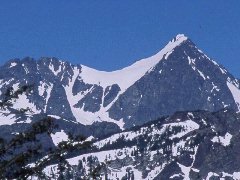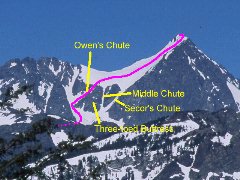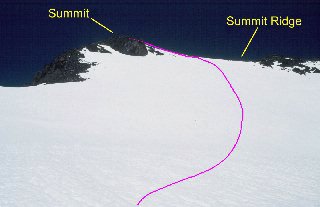|
The names given the major landmarks on the annotated map correspond
with names on the slide scans above. They are not correlated
with place names on the topo maps, but are merely my nomenclature
to allow easier descriptions of the route.
In the USGS photos, the stream flowing out of the Ritter/Banner Glacier
is readily visible, and the division of the stream where it flows
around a bump in its valley is a good landmark for the start of the
climb. Looking southwest from that point, you will see the "landmark
dome" which marks the south (left) side of the lower gully. As
described above, you ascent the gully nearly to the ridge above it,
then turn right and contour around the pinnacle at the southeast
corner of the Southeast Glacier. From there, you have the choice of
the standard Secor route (annotated in red on the aerial photo) or
the easier (in my opinion) route up Owen's chute. Once into the
upper bowl, attaining the summit ridge is either a snow or talus slog,
depending upon the time of year and amount of remaining snow cover.
From what we saw, you would want to hit the ridge a bit to the right
(east) of the summit and follow the ridge to the summit, proper.
I'll have to wait until 1999 to determine that for certain, of course!
|
